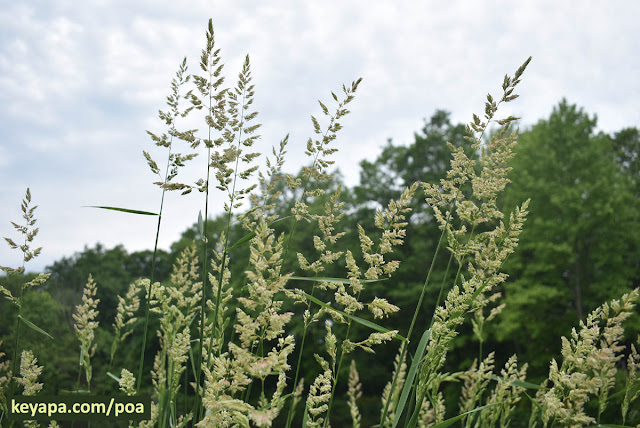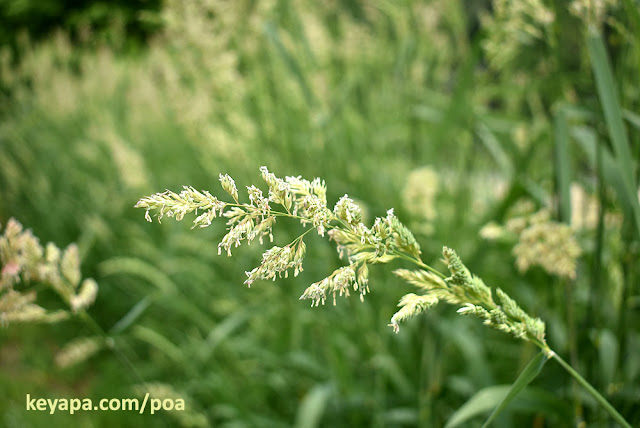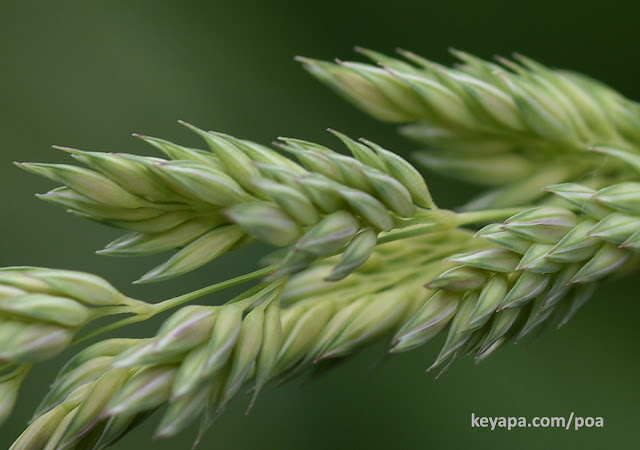"The Story of Grasses - Celebrating Our Grasslands and other Open Ecosystems"
Wednesday, June 3, 2020
Bloom time for Phalaris arundinacea (Reed Canary Grass)
There is this small lake that has a paved path going around it, and we usually walk the path during our afternoon exercise.
When we visited the lake two days ago, I noticed a stand of tall (1.5 m or so) grasses that had started blooming. The grass had pushed aside other plants and formed a dense barrier along the side of the path.
I do not believe I had seen this stand in years past, and I noticed that scattered around the lake were other similar specimens, although much smaller and existing only singly or in somewhat small groupings.
I examined the plant and suddenly realized that these were wild Phalaris arundinacea!
This C3 invasive grass has somewhat loose panicles, and each spikelet has a single fertile floret and two much smaller sterile florets surrounding it. Under my macro lens the pink-purple anthers looked deflated, and here and there I could see white feathery stigma poking out.
If you look closely at the macro shot above, in the spikelet in center you can see what looks to be 2 stigma and 3 clustered anthers poking out.
The ligule is membranous and around 5 mm in height, and the collar region has a pale yellow color.
This species has distinct populations that are both native and transplants from Europe, although there has been lots of mixing going on. But in general, P. arundinacea can become invasive in some wetland habitats, were its vigorous rhizome system allows it to exclude other plants and create the monotypic stands that I noticed in my lake.
I tried to remember whether this stand was here last year, and I don't believe it was. The pandemic perhaps has meant less maintenance of the surrounding area, and the species has suddenly become more visible. Nevertheless, it would be interesting to continue monitoring the stand and see whether it continues to spread and overwhelm the plants around it as time passes.
Subscribe to:
Post Comments (Atom)







No comments:
Post a Comment